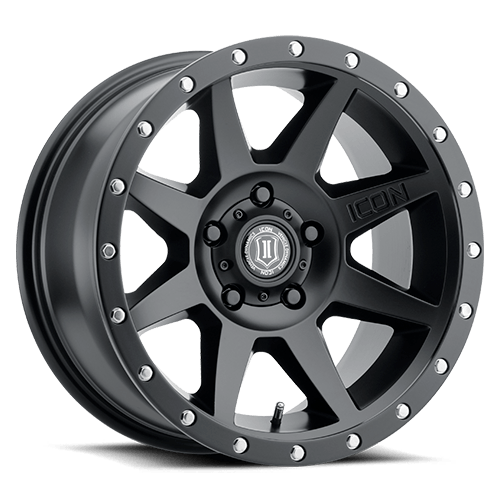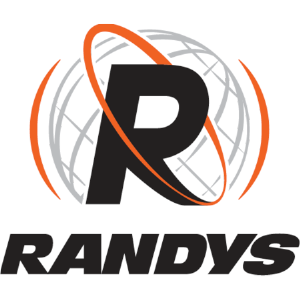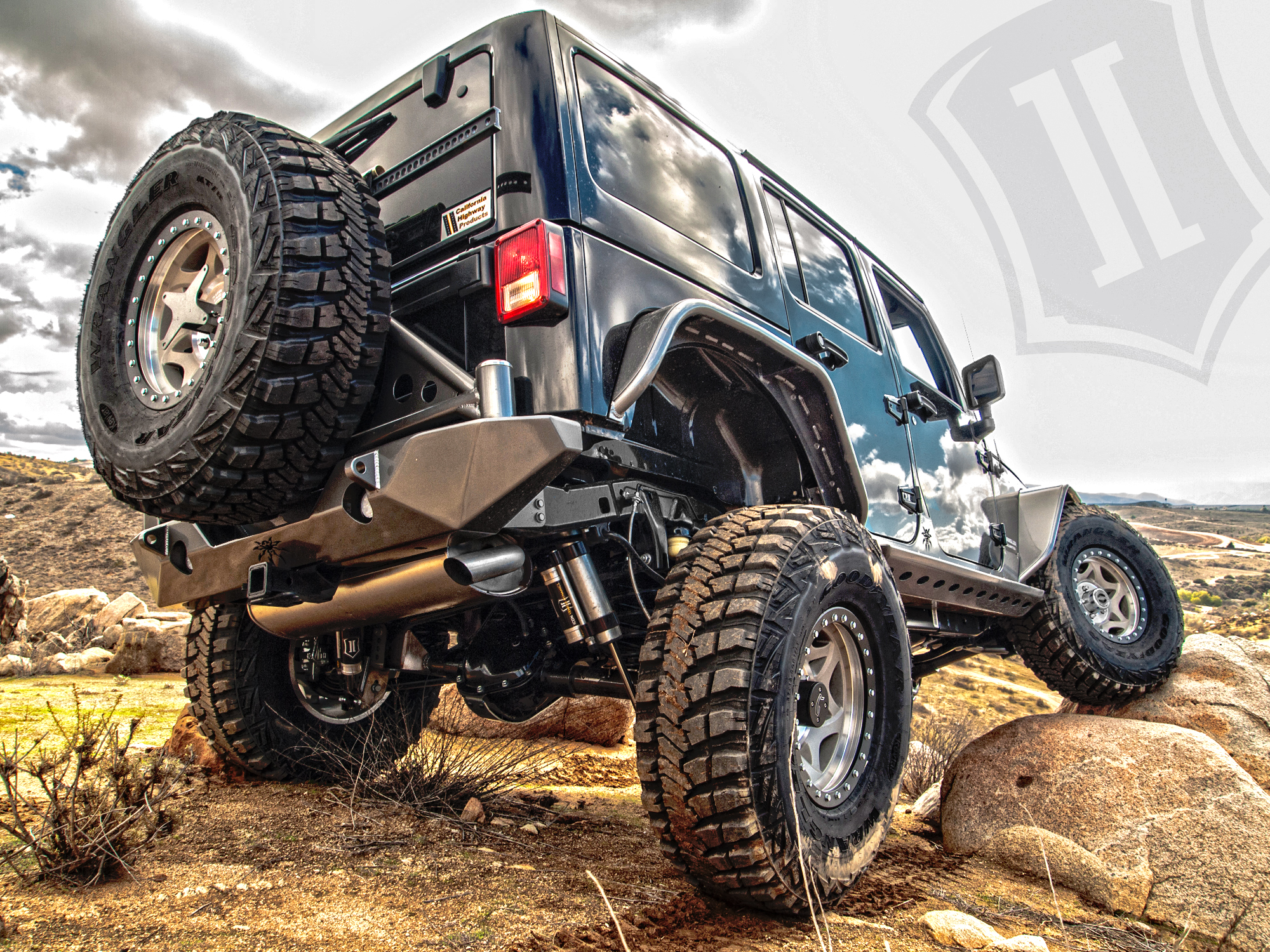Chromoly… the utterance of the word conjures images of superhero strength. The word is derived from chromium and molybdenum, the two main alloying elements of the metal. Chromium brings three major benefits to the table: innate hardness, improved pliability during the quenching process, and outstanding corrosion resistance. Molybdenum also serves to increase the alloy’s hardness.
When it comes to performance axles the use of chromoly results in axles that can handle the added stress that comes with running larger tires, adding aggressive traction devices, and other parameters like how aggressively you approach off-roading. Their superior resistance against breakage, distortion, and corrosion mean more peace of mind on the trail or the track. Yukon uses 4340, a high-quality nickel-chromium-molybdenum alloy in the manufacturing of forged gears, pinion gears, high-performance axles, Super Joints, and more.
Machining A Yukon Axle Shaft
The majority of machining on an axle shaft is done prior to heat-treating, but some applications have machine work that is done post heat-treat. Typical machining procedures include grinding/polishing bearing or seal surfaces, forming flanges and wheel pilots, drilling stud holes, milling ears for full circle clips, boring u-joint holes, balancing etc.
Spline creation is the most important machining processes in axle creation. This is a “there are many ways to skin a cat’ scenario. The cutting method which includes spline milling, rotary broaching, bobbing machines, and disc cutting is one part of the equation. Then there’s the spline rolling method which uses CNC machinery to form the splines by the displacement of metal, not the removal of metal as found in cutting processes.

Yukon machines its splines by cold roll forming on almost all of its axle applications. Akin to the principles of forging, the axle shaft is subjected to a great deal of pressure via tooling in the machine that contains the splines, both the shape and number determined by the design specs. In only a few revolutions the cam-like tooling dies imprints the shaft with splines. This is the best, most high-tech way to make splines and the advantages of this process are many. The high pressure involved in creating the splines re-arranges the grain structure of the metal throughout the entire tooth profile. This ensures consistent hardness throughout the spline teeth and shaft. Further, the magic happens at room temperature so the final product maintains its tensile strength and hardness, has greater yield, and the process produces superior surface finish versus methods that cut or extrude the splines. This level of attention to detail results in an axle that you can count on in the most trying terrain.
Strength Of A Caped Crusader
Types of Hardening/Heat Treating
There are two general types of hardening: case hardening and thru hardening. Case hardening only treats the surface layer while thru hardening penetrates to the center of the material. Thru hardening takes place in a furnace where the intense heat has the time to work into the core of the metal. There are a number of methods for case hardening which is the most popular heat-treating technique for stock and performance axles.
Induction Hardening
This type of hardening has been popularized by OE manufacturers. Induction hardening is fast, economical, effective, and controllable. Speed comes by not having to heat the entire component to its core. With the speed comes an economy of scale as more axles can be treated in a given timeframe, therefore lowering the overall treatment cost per axle. Effectiveness is the production of a part with a surface that is resistant to wear but maintains the toughness and strength of its core. Controllable in that t he process can be used to selectively harden areas of a component without affecting the properties of the entire piece. For instance, some original equipment axles are only induction hardened up to the bearing mount surface near the flange.
he process can be used to selectively harden areas of a component without affecting the properties of the entire piece. For instance, some original equipment axles are only induction hardened up to the bearing mount surface near the flange.
Induction hardening is the method Yukon uses on its entire line of performance axles. The process starts with an axle shaft that has likely been fully machined with splines etc. The shaft is heated with an induction coil to a predetermined temperature usually between 1,550- and 1,600-degrees Fahrenheit then quenched. Quenching is basically dousing the part with water or dropping it in an oil bath to quickly cool it. Yukon’s quality assurance staff tests axles from random production batches to ensure they receive proper heat treating and measure up dimensionally to engineering blueprints.
Carburizing
Nitride Hardening
Nitriding is a play on the carburizing method except nitrogen carrying substances (ammonia) are infused into the substrate instead of carbon. The surface coating process results in the formation of nitrides on the steel substrate. This particular case hardening process is chromoly specific because nitrides can only be created on metals that contain the elements chromium and molybdenum.
Nitride hardening differs from other case hardening techniques in that lower temperatures are used in heating and the quenching step is skipped altogether. This can be beneficial because less heat and less quenching shock produces less distortion in the final product. Yukon does not employ this process because the nitride infused surface does not benefit axle performance, the process is expensive, and it takes longer.
Tempering
The Benefits Of Hardening Axles
The ultimate goal of heat-treating an axle is to create a hard, abrasion resistant outer microstructure while retaining the steel’s tensile strength within its core… bulletproofing if you will. The result is an axle shaft that can take a pounding, endure a great deal of friction wear, and also possess the torsional strength to absorb the twisting forces encountered in high-traction-demand situations.
Need a caped crusader in your drivetrain? Getting serious in your off-roading, planning to run bigger tires, need to replace an axle and want the best?... Yukon goes the extra mile at every stage of chromoly axle development; design, manufacturing, and quality control so you get an axle that will absorb the most extreme off-road punishment for years to come.
 AMC
AMC
 Chrysler
Chrysler
 Dana
Dana
 Ford
Ford
 GM
GM
 Isuzu
Isuzu
 Nissan
Nissan
 Suzuki
Suzuki
 Toyota
Toyota



















